
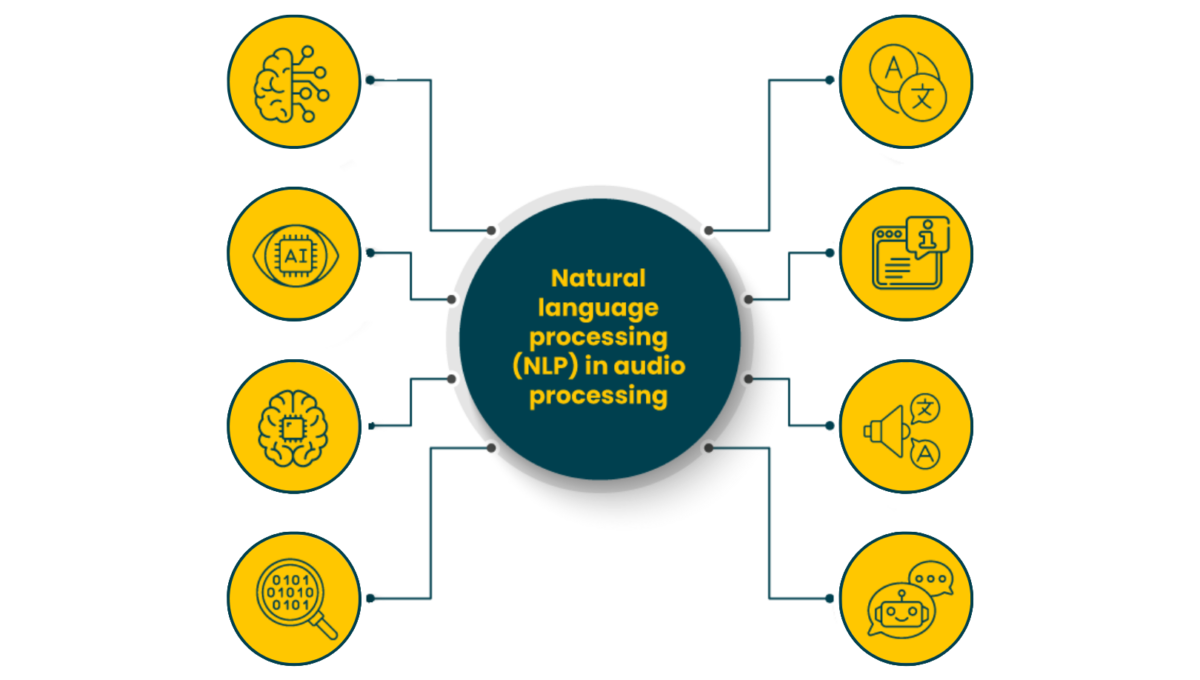
Not too long ago, when we thought technology could speak to us, understand us, and communicate cohesively, it would sound impossible. Now, we slowly see it happen. Audio and natural language processing are no longer just buzzwords but a doorway to many possibilities that help us simplify daily routines and completely change how we interact with machines.
We are more than a software development company and want to show you that deep tech solutions and innovation are at the heart of our work. This article will examine how the fusion of NLP and audio processing is about more than advanced voice assistants or realistic text-to-speech conversions. It’s about harnessing the power of sound to create more intuitive, accessible, and efficient solutions across various sectors. However, before starting with the more practical approach, let’s take a step back to the basics of audio and natural language processing (NLP).
What is audio processing?
Audio processing is a rapidly developing field that leverages the latest technology to handle, modify, study, and create sound. Advanced deep tech enables us to transcend conventional audio processing methods. Computer science, using emerging technologies, redefines how sound is understood, produced, and enhanced.
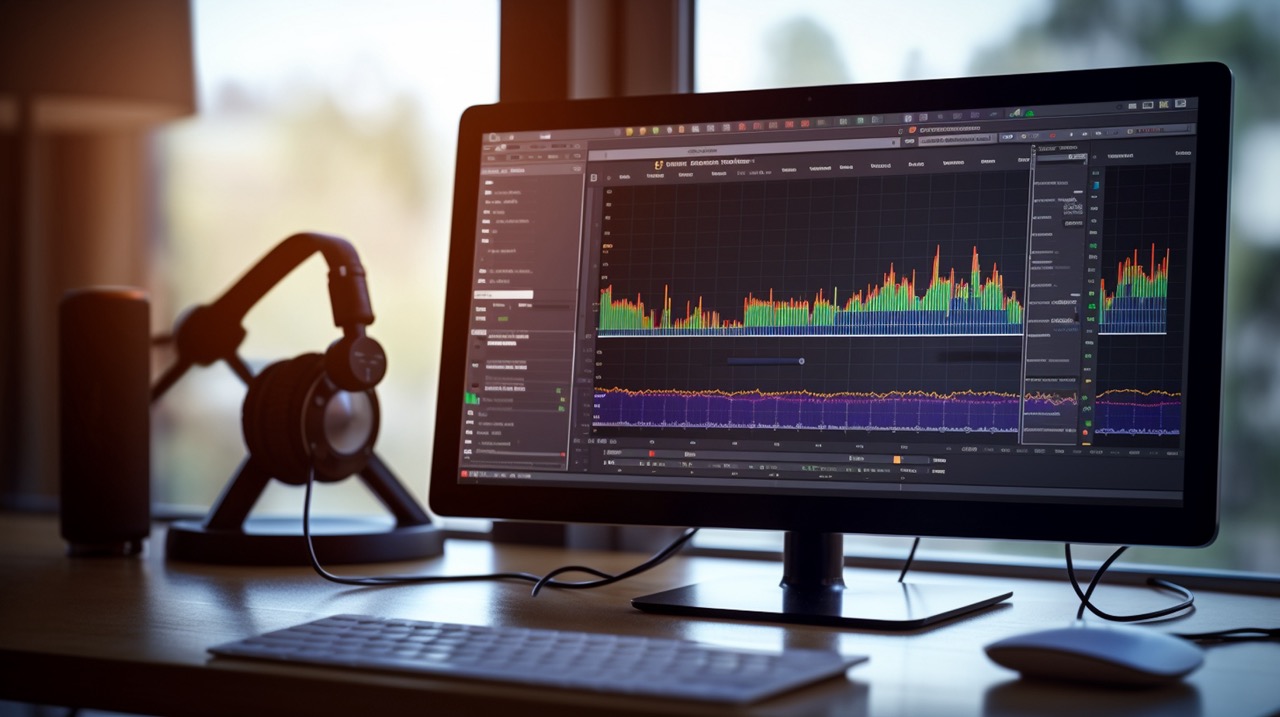
Natural language processing (NLP) in audio processing
NLP is a crucial part of modern audio processing. Natural language processing (NLP) is a branch of artificial intelligence (AI) that tackles interacting with computers and humans through natural language. The ultimate objective of NLP is to allow machines to understand, interpret, and respond to human language and speech in a valuable and meaningful way. The critical aspects of NLP technology include:
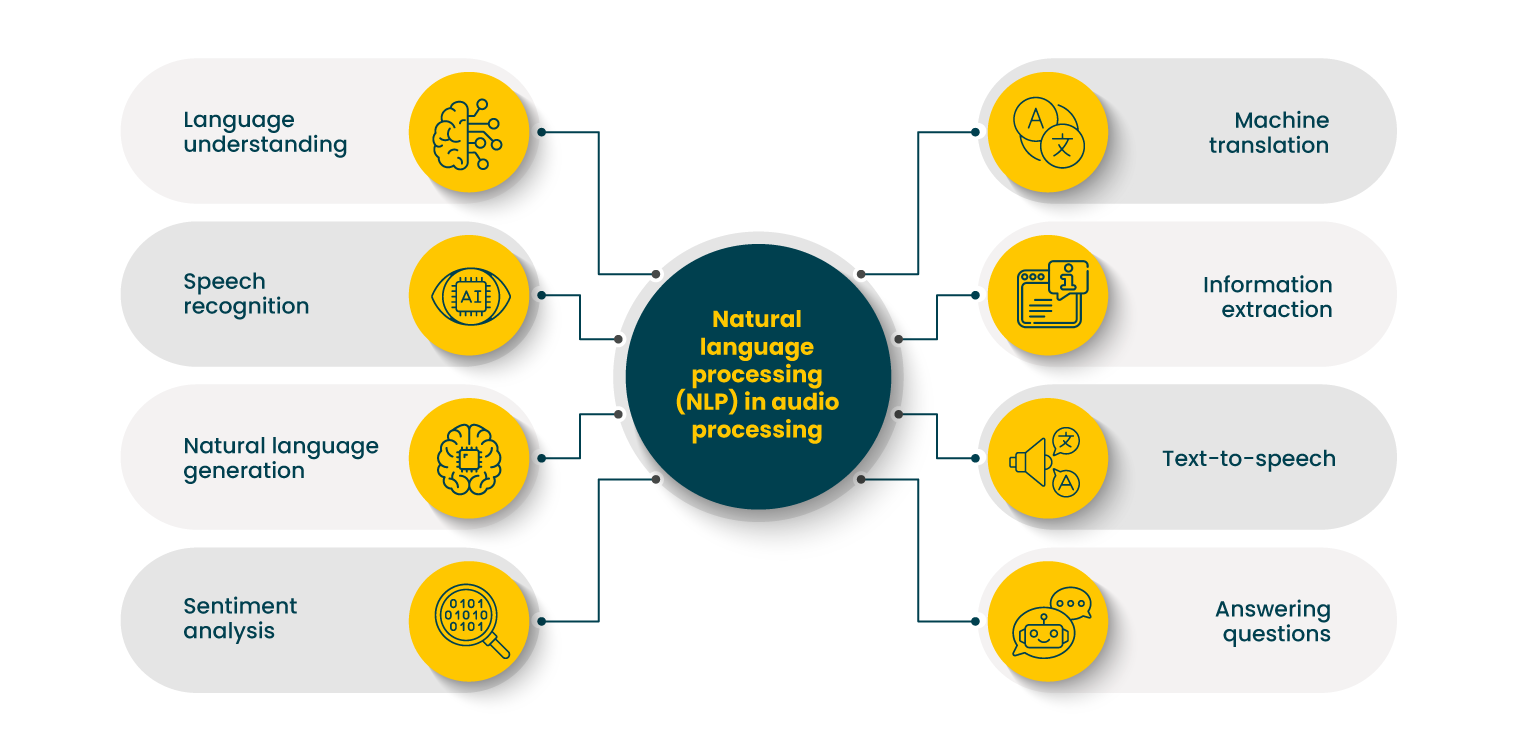
Combining natural language processing with the capabilities of audio signal processing builds a landscape of opportunities across industries. Below are examples of applying audio processing methods with NLP tasks in different sectors.
Deep tech for audio processing
Deep tech advancements, especially in AI and machine learning, extend to applications like real-time speech recognition and translation, meticulous sound synthesis, and emotion and context recognition. Here are some use examples of new technologies and their applications in sound that are critical, according to our experts:
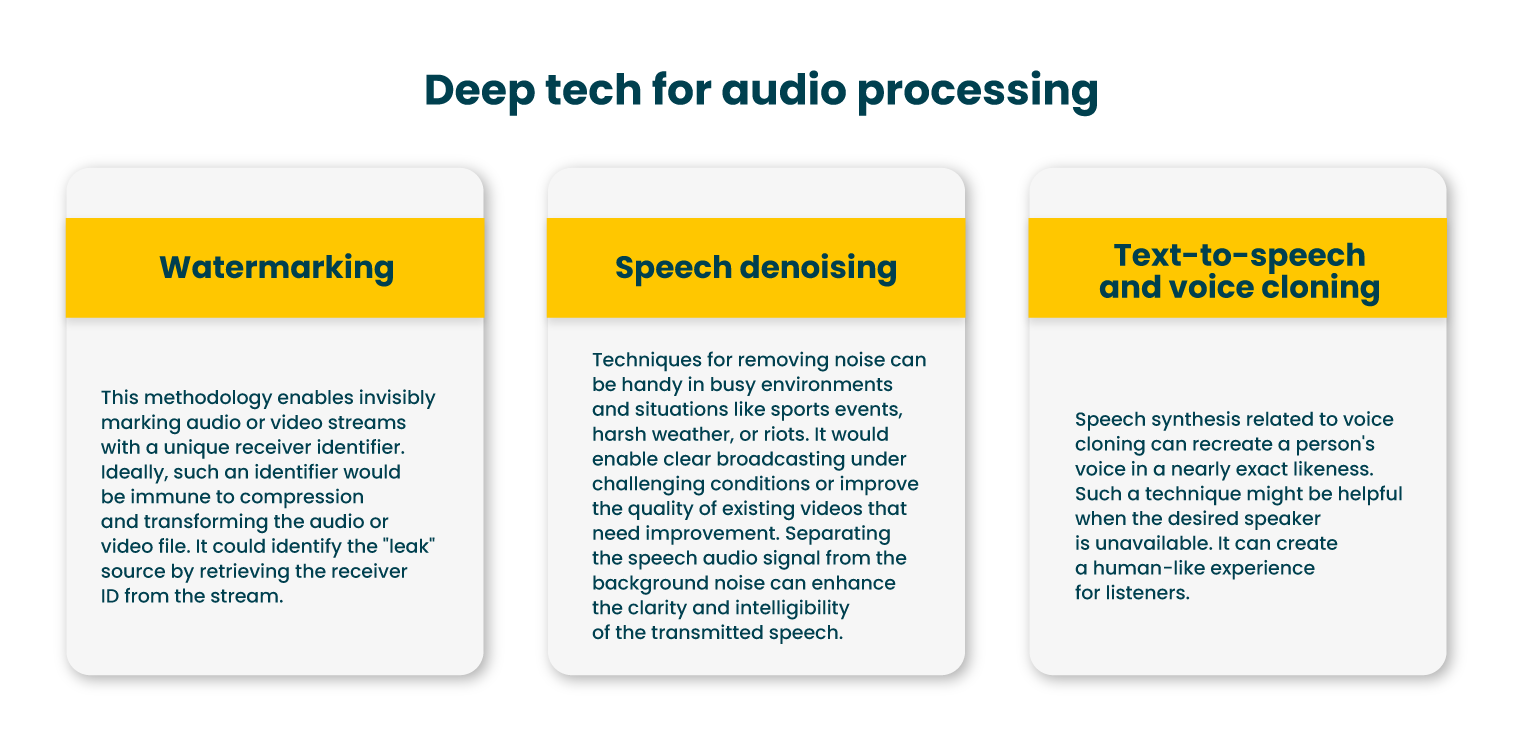
1. Providing outstanding and tailored care for customers
Applying audio signals and natural language processing in customer service-related environments is likely one that comes to mind immediately. We can adopt these technologies to transcribe calls, identify critical issues, and assess customer sentiment, which leads to improved quality control, training, and understanding of common customer concerns. Here are some examples of using audio signals and natural language processing in this area.
Customer sentiment analysis
Since many live customer calls coincide, one person can only monitor some of them. Natural language processing algorithms and audio signal processing methods provide conversation analytics, for example, by indicating sentiment in these calls based on the words used in conversations. NLP can understand these sentiments by catching specific phrases or words and determining if it’s a price objection, a satisfied customer, or an overall lack of enthusiasm.
It helps identify negative sentiments, and a supervisor can pull up a real-time transcript to gain more context before de-escalation. Machine and deep learning systems can also inform when the feedback is mainly positive to highlight the best practices that should be continued.

Live support improvement
Apart from analyzing customer conversations, NLP can be helpful for agents during their calls. It can play a part in a real-time assist for agents. For example, it can hear and understand the customers’ questions and search the knowledge base for matching inquiries, immediately providing guidance or solutions to specific problems in real time.
Learn about our AI chatbot transforming
e-commerce


2. Boosting diagnostics and patient care in healthcare
The scope of using NLP and audio processing in healthcare is broad and can be disruptive for patients and professionals. It aids in transcribing doctor-patient interactions and medical dictations, saving precious time, but it can even support disease detection.
Supported diagnostics
Our NLP expert at DAC.digital, Krzysztof Wołk published multiple research papers addressing the topic. His work, “Automated speech-based screening of depression using deep convolutional neural networks,” discusses a novel approach to automated depression detection in human speech using convolutional neural networks (CNN) and multipart interactive training. The experimental results obtained from analyzing voice samples showed a promising baseline accuracy, reaching 77%.
In his other research, “Towards computer-based automated screening of dementia through spontaneous speech,” he proposes machine learning models to detect signs of dementia in speech in two methods, exhibiting good generalization capabilities and displaying progress toward new, innovative, and more effective computer-based dementia screening through spontaneous speech.
Check out our ML solution for improving Parkinson’s disease prediction


Here are some other areas where audio processing and NLP can be used in healthcare.
Voice assistants for better patient care
AI-supported chatbots and voice assistants can automate initial interviews with patients by asking questions and collecting the answers. In turn, they can refer them to the correct professional based on their symptoms, advise them on how to proceed, and give basic information on procedures. They can also aid in scheduling appointments, which can unburden reception desks for more efficient service and patient care.
Real-time transcription for complete and more organized records
Audio signal processing and speech recognition programs can facilitate the transcription of medical consultations directly into electronic health records in real-time. It will result in more complete patient records that can be shared between professionals should the need arise, saving considerable time and resources and minimizing the chance of incomplete records. Outside the scope of healthcare, NLP and audio processing can contribute significantly to improving accessibility.
Disclaimer.
Would you like to find out more about advanced technologies in healthcare?
Check out our health and sports partner, digital health consultancy and read captivating insights and success stories, and maybe even start building your innovative solution.
3. Increasing everyday accessibility with voice-operated tools and systems
The capabilities of understanding and interpreting human language create many opportunities to improve accessibility. Speech recognition and synthesis systems are most prominent in making it happen. Here are some highlights of using these technologies in the struggle for a more accessible world.
Natural language generation into text or speech
Speech recognition and generation software can enhance the comfort of life and content accessibility for visually impaired and hard-of-hearing individuals. Those with difficulties seeing can utilize text to be converted into spoken words – text-to-speech (TTS) methods. The process involves the following steps:
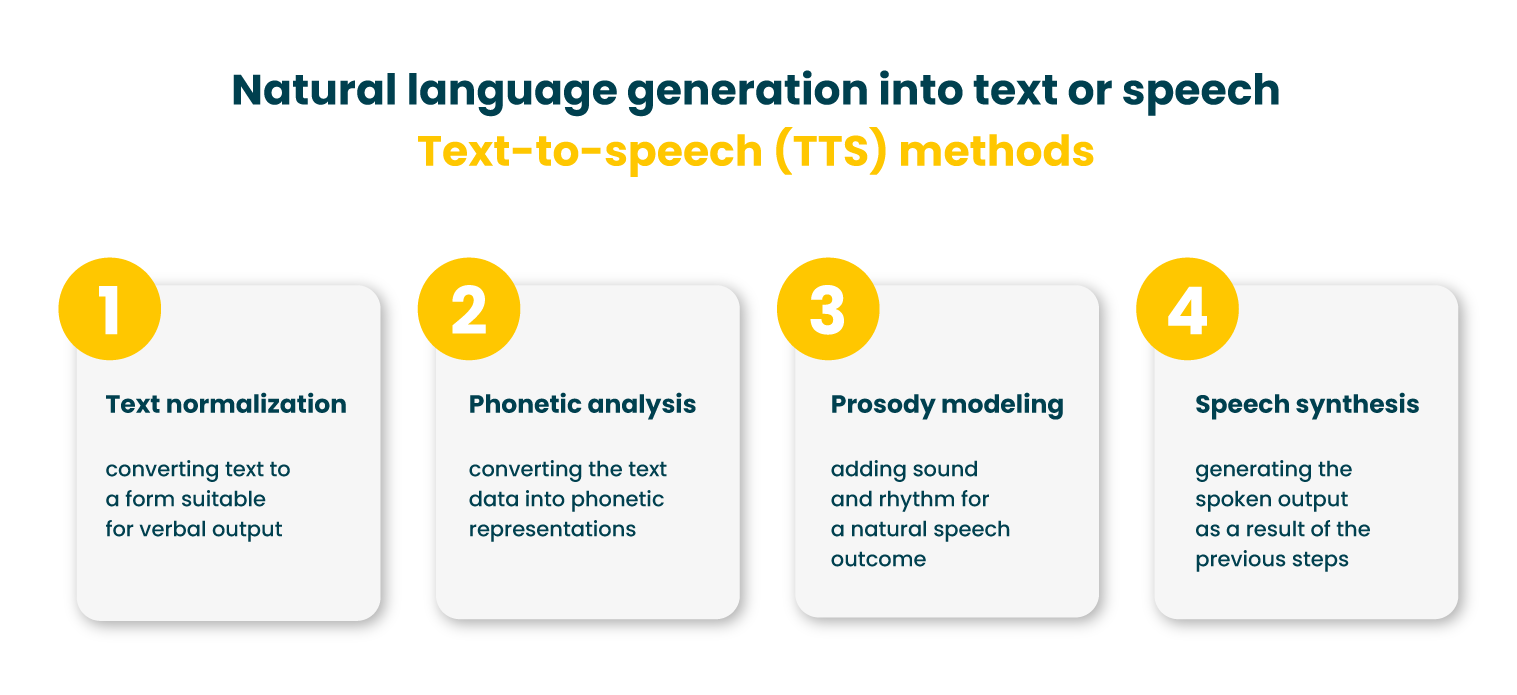
Analogically, speech-to-text (STT) involves a process in the opposite direction:
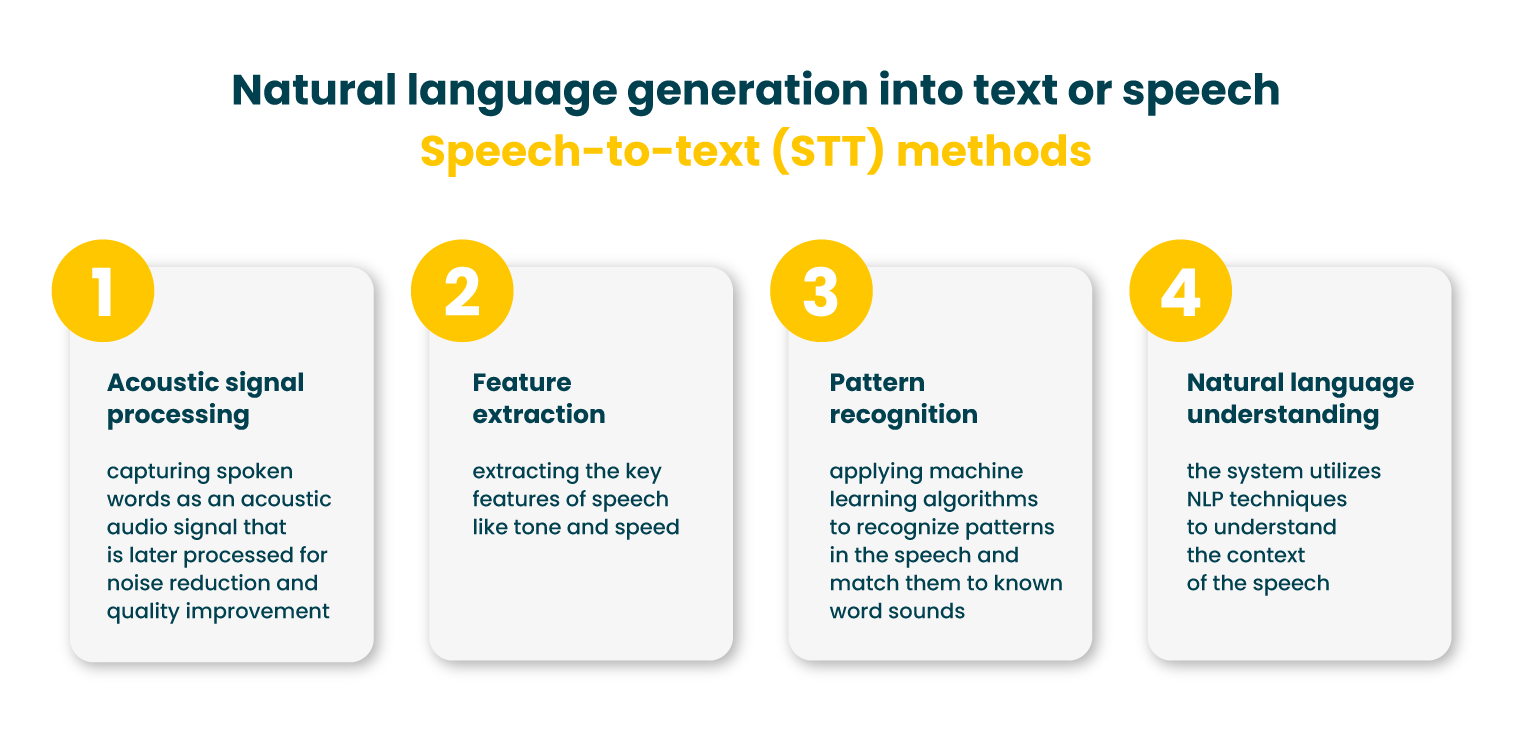
Voice commands for smart homes and more accessible environments
Disabilities can remarkably decrease the comfort of life and make even the simplest tasks too difficult. Fortunately, technological advancements bring solutions that help bridge that gap and make everyday lives with disabilities easier. Voice recognition and signal processing techniques enable voice commands to control the immediate environment, such as a home.
Voice-operated tools and devices allow controlling home appliances and fixtures, reducing the need for movement in case it poses a challenge. Voice-operated devices are increasingly common and more advanced at homes and some public institutions, making them accessible to everyone.
Initiatives like Project Voice study and propose new solutions for community benefits and accessibility. However, these technologies can also find their use for educational purposes.
4. Empowering education with NLP methodologies
There are multiple ways in which audio and natural language processing impact how we perceive education. Here are some of the more notable ones.
Teacher assistance and feedback
Speech recognition and NLP tools, including developing large language models (LLMs), can aid teachers in education. They help to tutor students in subjects like mathematics, providing feedback on where students may misunderstand concepts. Researchers are developing NLP systems to act as a teacher’s aide, offering suggestions for lesson improvement. Such a tool can function like a nonjudgmental coach, providing tailored advice to educators at different stages of their careers.
Improving writing and reading skills
NLP and audio-processing technologies can contribute to assisting students in developing their writing and reading abilities. These tools can, for example, provide feedback on writing assignments, give informative feedback, and suggest steps for improvement. Additionally, NLP algorithms can offer automatic feedback to students struggling with reading comprehension, and newer readability formulas based on NLP can better match reading materials to students’ skills.
Understanding learning behaviors and motivation
Utilizing NLP tasks to analyze language use in the classroom, the systems can identify and predict students’ mental states during learning. It will give valuable insights into how teaching methods are received and suggest adjustments to increase engagement and comprehension, ultimately expanding the understanding between students and teachers, their motivations, and limitations.
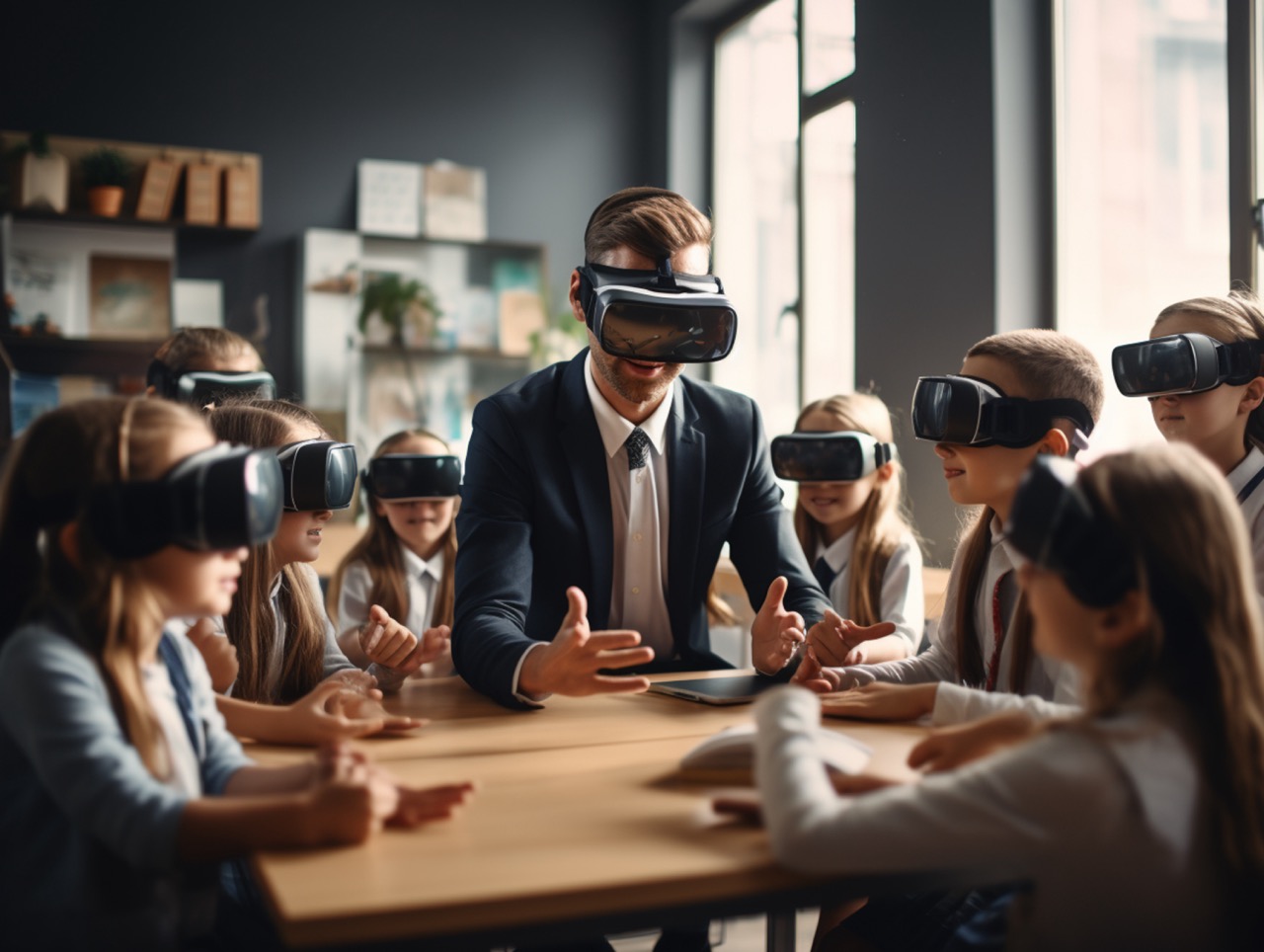
5. Applying audio denoising systems for enhanced sound in media broadcasting and communication
Environmental noise can disrupt audio signals significantly, especially in busy or naturally noisy settings. Clear voice broadcasting gets difficult during intense events like riots or extreme natural phenomena or on the site of a heated sports event or music festival. That’s where the denoising tools come to aid in multiple aspects.
Enhanced speech intelligibility
It’s the most obvious starting point of the utility of such systems. It’s crucial in environments where clear communication is essential, such as in classrooms or legal proceedings. It can also improve real-time translations so that the speakers can hear each other better, especially if they speak different accents or one language is more complex and must be heard clearly.
Background noise reduction
Clear broadcasting becomes challenging in boisterous environments like sports events, music festivals, extreme weather, or riots. Noise reduction systems help rid unwanted sound, allowing one to focus on the essential aspects of the broadcast, such as commentary or interviews. It improves the experience of the watchers or listeners exponentially.
Hearing aid effectiveness improvement
Research shows that denoising algorithms can significantly improve the performance of hearing aids, particularly in terms of speech intelligibility. In studies, denoising systems have demonstrated the ability to reduce speech reception thresholds (SRT), meaning that hard-of-hearing listeners can understand speech at lower volumes than without the denoising technology. It has displayed great promise in making environments like busy bars or cafes, where background noise can be overwhelming, more accessible to those with hearing impairments.

Stay tuned, and let’s talk
These are only some opportunities for applying audio processing with NLP techniques. With advancements in AI technologies, machine learning methods, and deep learning models, there is still much more to uncover. Soon, we will be happy to share our project in this technology scope. Stay connected, and if you’d like to talk, please contact us for more details. Our experts are always open to your needs.


